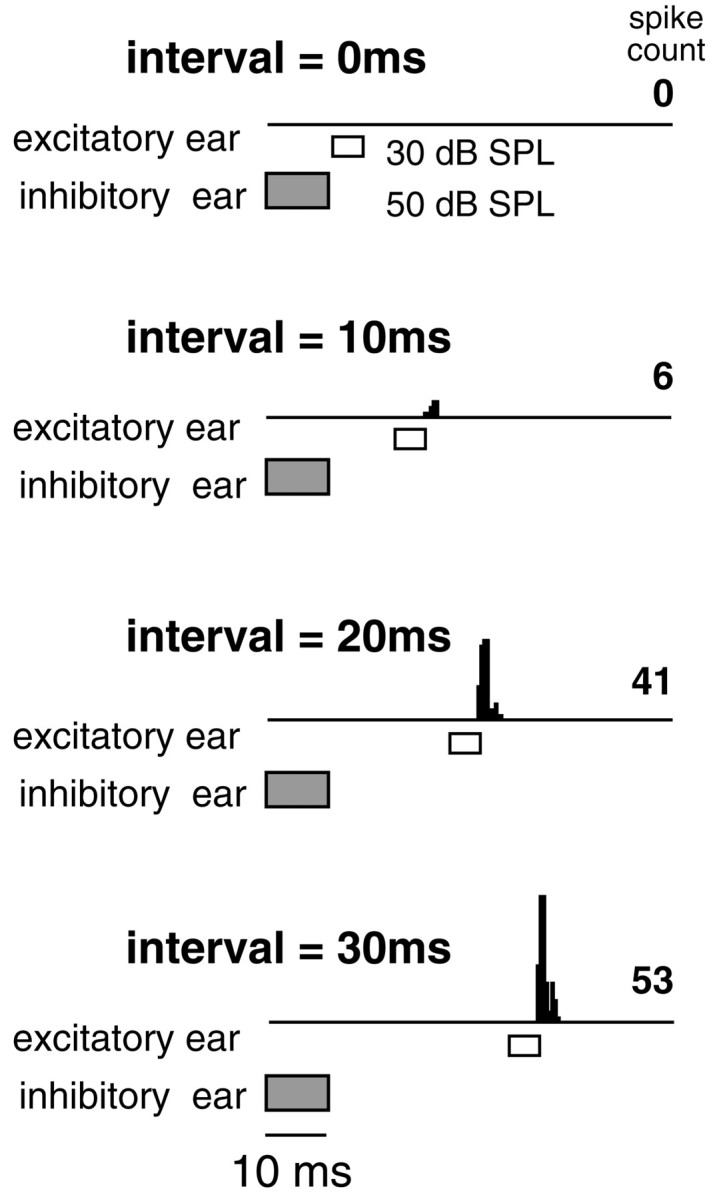Fig. 5.

Persistent inhibition in DNLL evoked by an inhibitory signal at the ear ipsilateral to the DNLL suppresses discharges evoked by excitatory signals presented to the contralateral ear. Top, Complete suppression of contralateral (excitatory) signals by ipsilateral signals when the two were presented at an interval of 0 msec is shown. Bottom, Partial recovery occurred when the excitatory signal followed the inhibitory signals by 10–20 msec. Full recovery first occurred 30 msec after the inhibitory signal was over. The excitatory signals were 5 msec BF tone bursts and were 30 dB SPL. The inhibitory signals were 10 msec BF tone bursts at 50 dB SPL. BF was 36.1 kHz.
